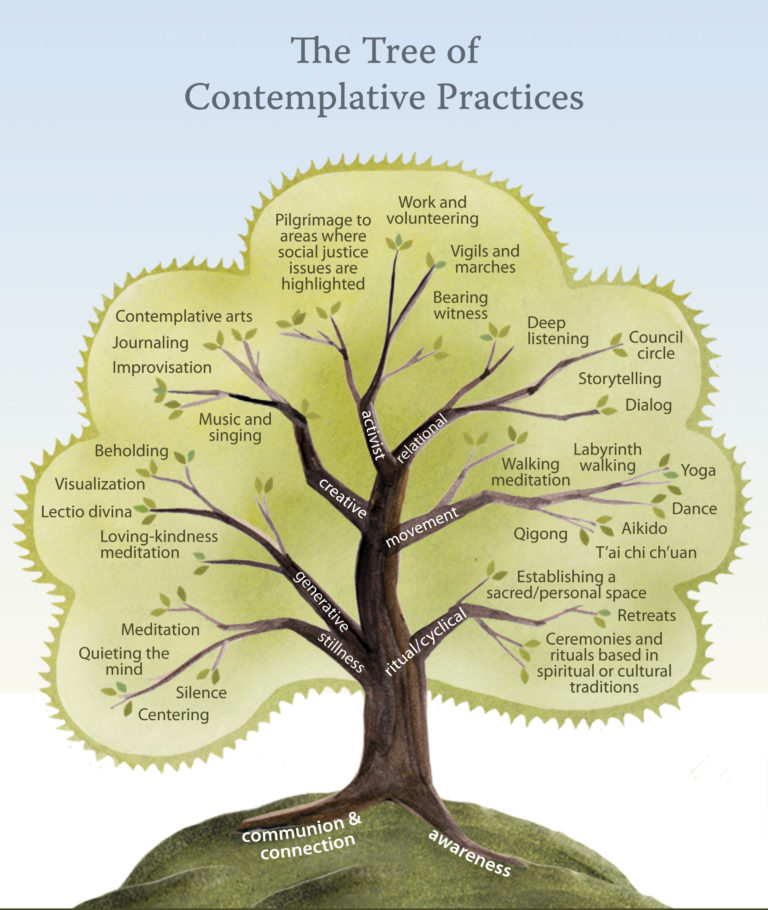
The Tree of Contemplative Practices Image by Carrie Bergman + design by Maia Duerr/The Center for Contemplative Mind in Society..
The Tree of Contemplative Practices
Mirabai Bush, a meditation and mindfulness teacher who leads Google’s mindfulness training, “Search Inside Yourself,” pointed us to an illustration of contemplative practices, which shows the breadth of meditation and mindfulness within traditions. Although this list isn’t comprehensive, it does open up one’s imagination about how these disciplines take root and manifest themselves in our lives.
The Center for Contemplative Mind in Society goes on to explain:
“On the Tree of Contemplative Practices, the roots symbolize the two intentions that are the foundation of all contemplative practices. The roots of the tree encompass and transcend differences in the religious traditions from which many of the practices originated, and allow room for the inclusion of new practices that are being created in secular contexts.
The branches represent different groupings of practices. For example, Stillness Practices focus on quieting the mind and body in order to develop calmness and focus. Generative Practices may come in many different forms but share the common intent of generating thoughts and feelings, such as thoughts of devotion and compassion, rather than calming and quieting the mind. (Please note that such classifications are not definitive, and many practices could be included in more than one category.)
Because this illustration cannot possibly include all contemplative practices, we offer a free download of a blank Tree that you can customize to include your own practices. Activities not included on the tree (including those which may seem mundane, such as gardening or eating) may be understood to be contemplative practices when done with the intent of cultivating awareness and wisdom.”
Seeing these classifications, I’m left wondering what else in our experiences might be part of this tree. Here’s a blank tree for your own practices. Fill it in and, if you’re willing, share it with us and others.

